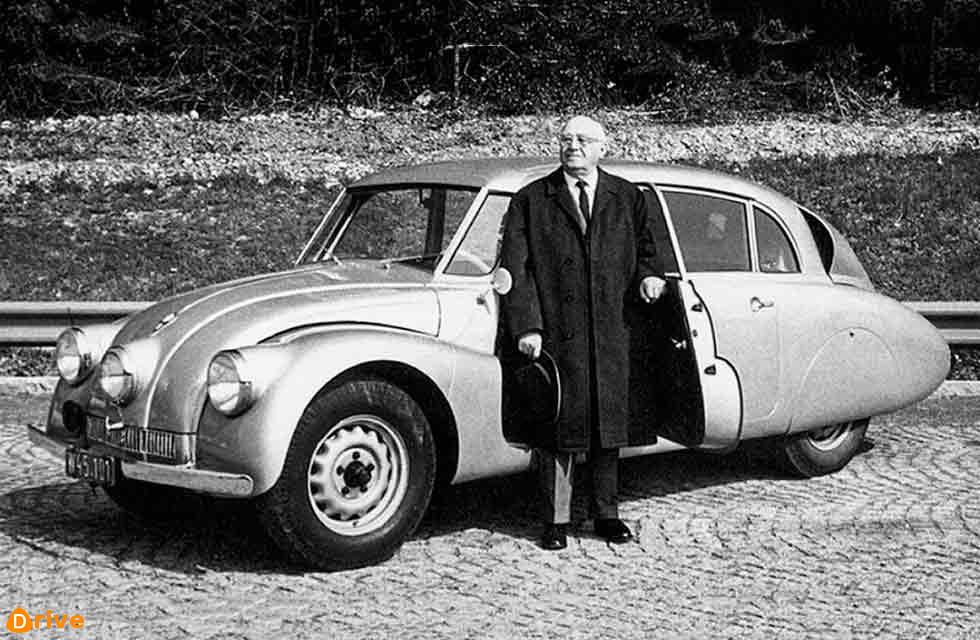Proof that sometimes even the courage to tackle big ideas and the genius to make them work just isn’t enough. Words Dale Drinnon.
GONE BUT NOT FORGOTTEN
Few individuals of any wisdom or age or self-honesty would totally reject the old adage ‘better lucky than good’. Most would simply add the corollary ‘better yet, both’ and, for much of his working life, Hans Ledwinka would seem proof conclusive. He was not only an engineer of rare talent and vision, he enjoyed exceptional opportunities to exercise those qualities as he wished and to great professional influence, in a time and place when such a combination could launch an industrial empire or a popular legend. All the more poignant, therefore, that he ended up with neither.
‘Good work attracts bad admirers. Maybe that felt OK when Hitler was wining and dining’
It was not for lack of application or initiative. From his 1878 birth on the outskirts of Vienna, Austria, Ledwinka was one of those straight-ahead, eyes-on-the-prize types. He took extensive formal training in Austria’s respected tech institutions, and learned practical mechanics as an apprentice in his uncle’s machine shop.
In 1897, aged 19, he got his first real job, in that part of Austria-Hungary which would after the Great War become Czechoslovakia, as a draftsman with the railcar concern that similarly became Tatra – just in time to save their bacon when the early attempts at automobile manufacture needed some hasty remedial work. By the age of 23 Ledwinka was their head designer.
With the exception of two short intervals when he left over what we would now call creative differences, Ledwinka would remain there throughout his effective career. Both times, by the way, senior management lured him back with sweetheart deals, including, from the mid-1920s, complete control over design and production. Little wonder that, unlike his contemporary Dr F Porsche, Ledwinka never started his own company. In effect, he had one already, and didn’t have to handle the bookkeeping.
He was nonetheless worth it; during the 1920s and ’30s, Ledwinka built Tatra into a genuine force in Europe’s transportation industry. His machines were daring and well- made, and while he invented relatively little new technology, he invented many clever ways to improve existing technology. For the neat model T11 of 1923, he brought together swing- axle IRS (existing), a backbone chassis (existing), and an air-cooled flat-twin engine (existing) – using ducted, force-fed airflow (his crucial refinement) – to create probably the first truly marketable European ‘people’s car’.
Like many engineers of the period, he was intrigued by the evolving science of streamlining. He was the only one, however, who seriously transferred it to successful series-produced cars, the staggeringly progressive T77 and T87 of the ’30s, shaped by celebrated Zeppelin aerodynamicist Paul Jaray, powered by air-cooled, rear-mounted V8s, and boasting drag coefficients rarely approached by anything since. Ledwinka also applied the backbone construction, swing-axle and air-cooling ideas to his personal fondness for heavy diesel lorries, and Tatra commercial vehicles use them still.
But good work attracts bad admirers. Maybe that felt OK when Adolf Hitler was wining and dining and flattering rather than when he was ordering Dr Porsche to take know-how for the Volkswagen from wherever was necessary, and worry about patents later. Hitler was right, too: after the Nazis occupied
Czechoslovakia and seized Tatra in 1938, all Tatra’s infringement lawsuits disappeared. Their automotive programme disappeared, too, apart from some T87s for State use: Luftwaffe officers loved them.
Ledwinka spent the war cranking out lorries for the Wehrmacht, and at the end, of course, Tatra sat within the Soviet zone. In 1945 he went to prison for collaboration. Oddly enough, so did Dr Porsche over in the Western zone, but the Russians were especially hardcore and Ledwinka, 67 upon sentencing, did six years while Porsche was out in two. On release he moved West himself and, despite his age, began a variety of consulting jobs, many for son Eric, chief engineer at Steyr. He had to: he’d lost everything, including his considerable holdings in by-then-nationalised Tatra.
He died in 1967 in Munich, two weeks after his 89th birthday. As the final twist of fate would have it, in 1961 Tatra had collected a substantial out-of-court settlement from VW on certain Ledwinka patents involving air-cooled, rear-mounted engines. Ledwinka, however, received not a penny, and couldn’t afford adequate representation to establish a legal challenge. No business or automobile has ever worn his name and, outside the occasional mention in automotive histories, it is now rarely remembered.







